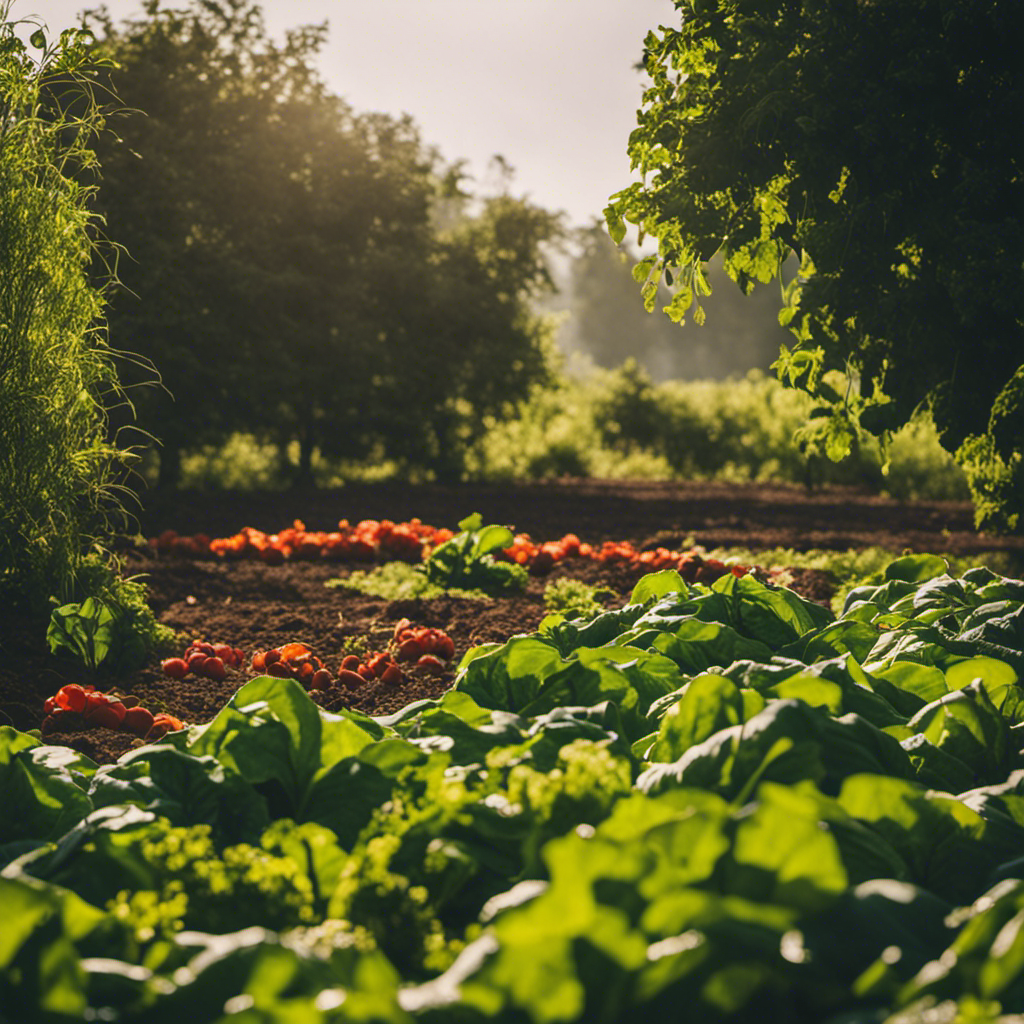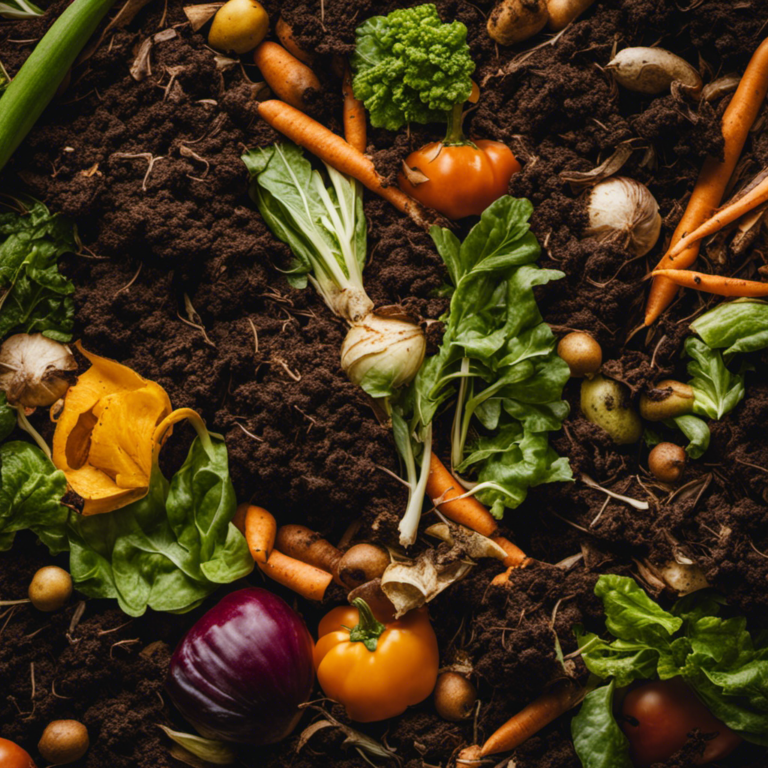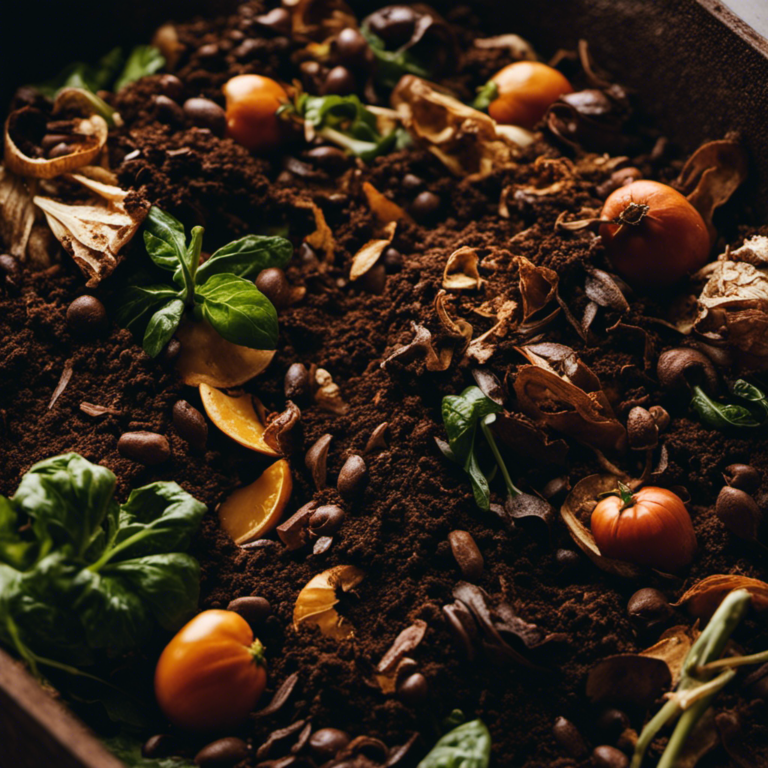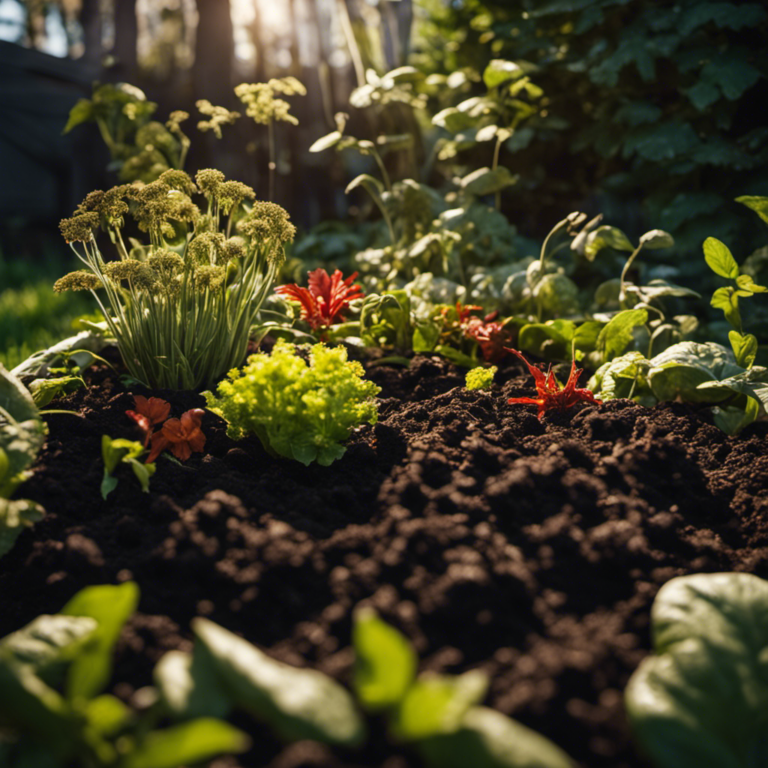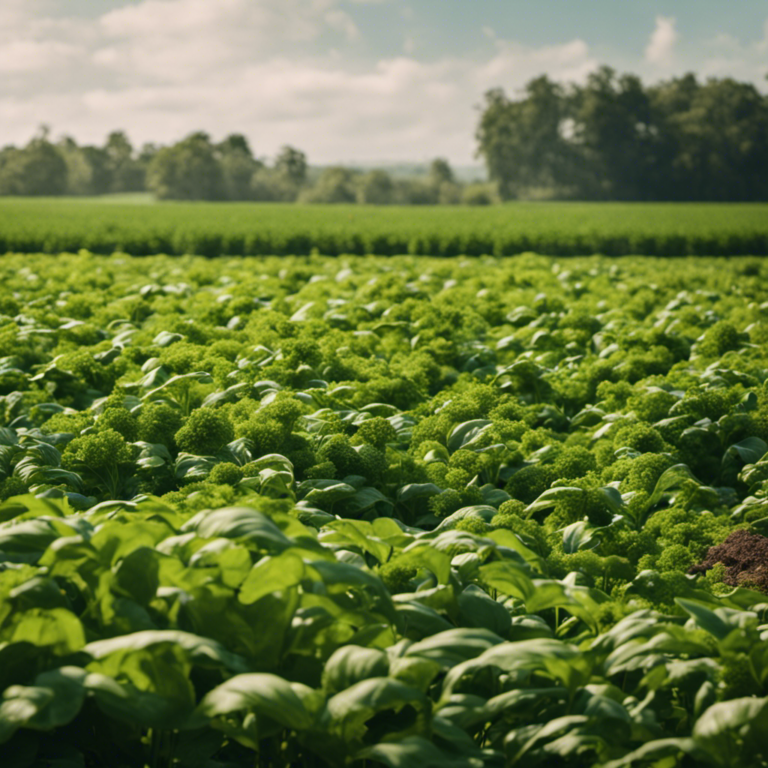I understand that composting can seem time-consuming and complicated. However, I want to assure you that it doesn’t have to be. In fact, there are 10 advanced composting techniques that can greatly benefit organic farming.
These techniques, including hot composting and vermicomposting, are designed to maximize efficiency and yield nutrient-rich soil.
So, if you’re ready to elevate your composting game, let’s dive into these game-changing techniques together.
Key Takeaways
10 Advanced Composting Techniques for Organic Farms
These advanced composting techniques offer organic farmers a range of options to efficiently manage waste and create nutrient-rich compost. Methods like hot composting, vermicomposting, and aerated static pile composting can help reduce environmental impact and maximize the benefits of organic waste. Incorporating black soldier flies and earthworms further improves the efficiency of the composting process, promoting a sustainable and thriving farm ecosystem. So why not explore the world of advanced composting and reap the rewards it offers?
Quote: "Composting is not only a sustainable way to manage waste on organic farms but also a key component in building healthy soil and promoting a thriving farm ecosystem."
Hot Composting

Hot Composting: Accelerating the Decomposition Process
To achieve optimal decomposition and nutrient-rich compost, hot composting is a key technique used on organic farms. Hot composting involves managing the compost pile’s temperature to speed up the decomposition process. Proper compost pile management and temperature control are crucial for successful hot composting.
Compost pile management begins with achieving the right balance of carbon-rich (brown) and nitrogen-rich (green) materials. Maintaining an ideal carbon to nitrogen ratio of 30:1 promotes the growth of beneficial microorganisms that break down organic matter. Regularly turning the compost pile ensures proper aeration, as oxygen is necessary for the microorganisms to thrive. This turning process also helps distribute heat evenly throughout the pile.
Temperature control plays a critical role in hot composting. The ideal temperature range for hot composting is between 135-160°F (57-71°C). These temperatures create an environment where thermophilic microorganisms flourish, accelerating the decomposition process. Monitoring the compost pile closely is essential to achieve and maintain the desired temperature. Adjustments to the pile’s size, moisture content, and the addition of high-nitrogen materials may be necessary to regulate the temperature effectively.
By implementing effective compost pile management techniques and closely monitoring temperature control, hot composting becomes an efficient and productive process. This method allows for the quick production of nutrient-rich compost, benefiting soil health and contributing to the success of organic farms. As a result, hot composting is a valuable tool for organic farmers seeking to enhance their farming practices and promote sustainable agriculture.
Quote: ‘Hot composting is a game-changer for organic farmers. By carefully managing the compost pile and controlling the temperature, we can produce nutrient-rich compost quickly, benefiting both our crops and the environment.’ – [Your Name]
Vermicomposting
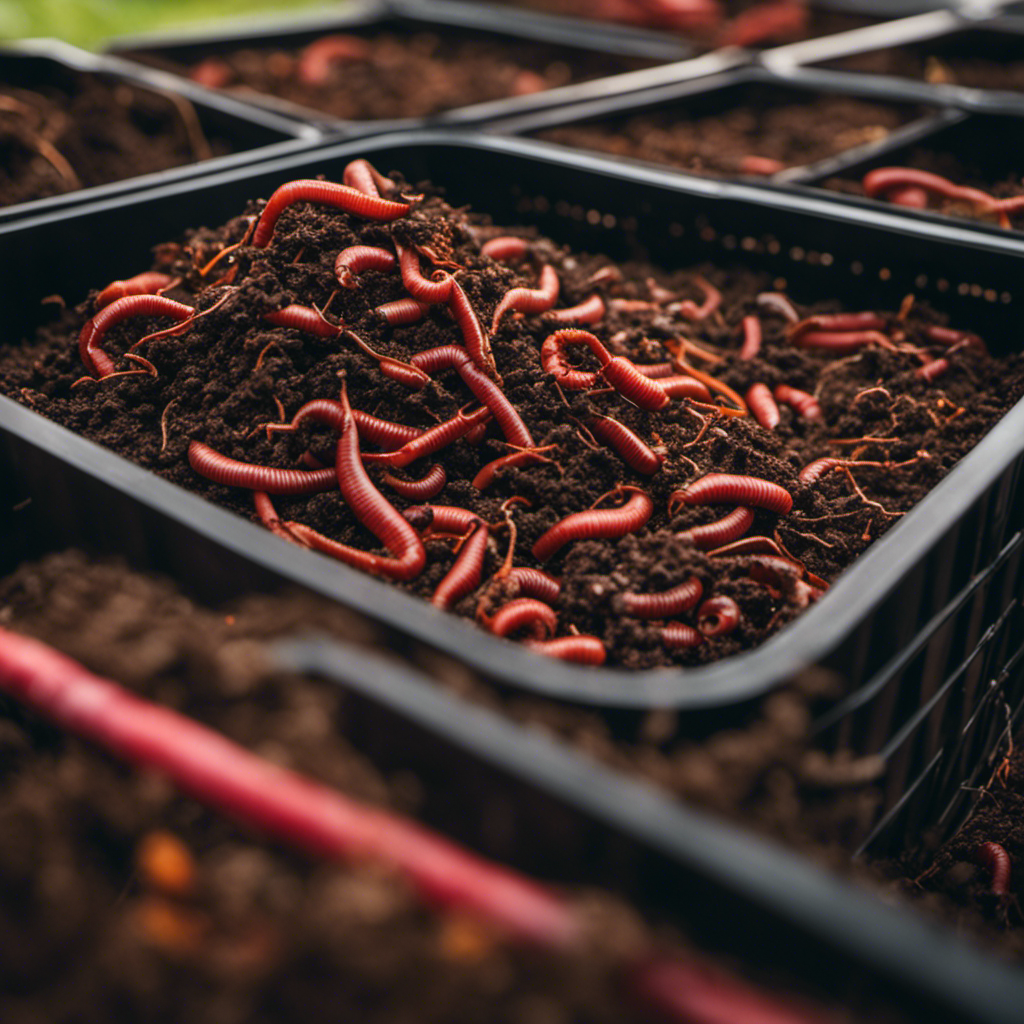
As I explore the topic of vermicomposting, I’m discovering advanced composting techniques that can benefit organic farms. Vermicomposting involves using earthworms to break down organic waste materials, like food scraps and plant waste, into nutrient-rich compost. This technique offers numerous advantages for organic farmers.
One of the key benefits of vermicomposting is that earthworms can decompose organic matter at a faster rate compared to traditional composting methods. This leads to the quicker production of nutrient-rich compost that can improve soil fertility and enhance plant growth. Additionally, vermicompost contains higher levels of beneficial microorganisms and plant growth hormones, making it a valuable soil amendment.
However, like any composting technique, vermicomposting may face certain challenges that require troubleshooting. One common issue is a foul odor, which can indicate an imbalance in the compost bin. To address this, it’s important to ensure proper aeration and moisture levels within the bin, as well as maintain a balanced ratio of carbon-rich and nitrogen-rich materials.
Another challenge in vermicomposting is dealing with pests, such as fruit flies or mites. To prevent infestation, it’s crucial to regularly check and maintain the moisture levels in the bin and avoid adding oily or acidic materials that may attract pests.
Bokashi Composting
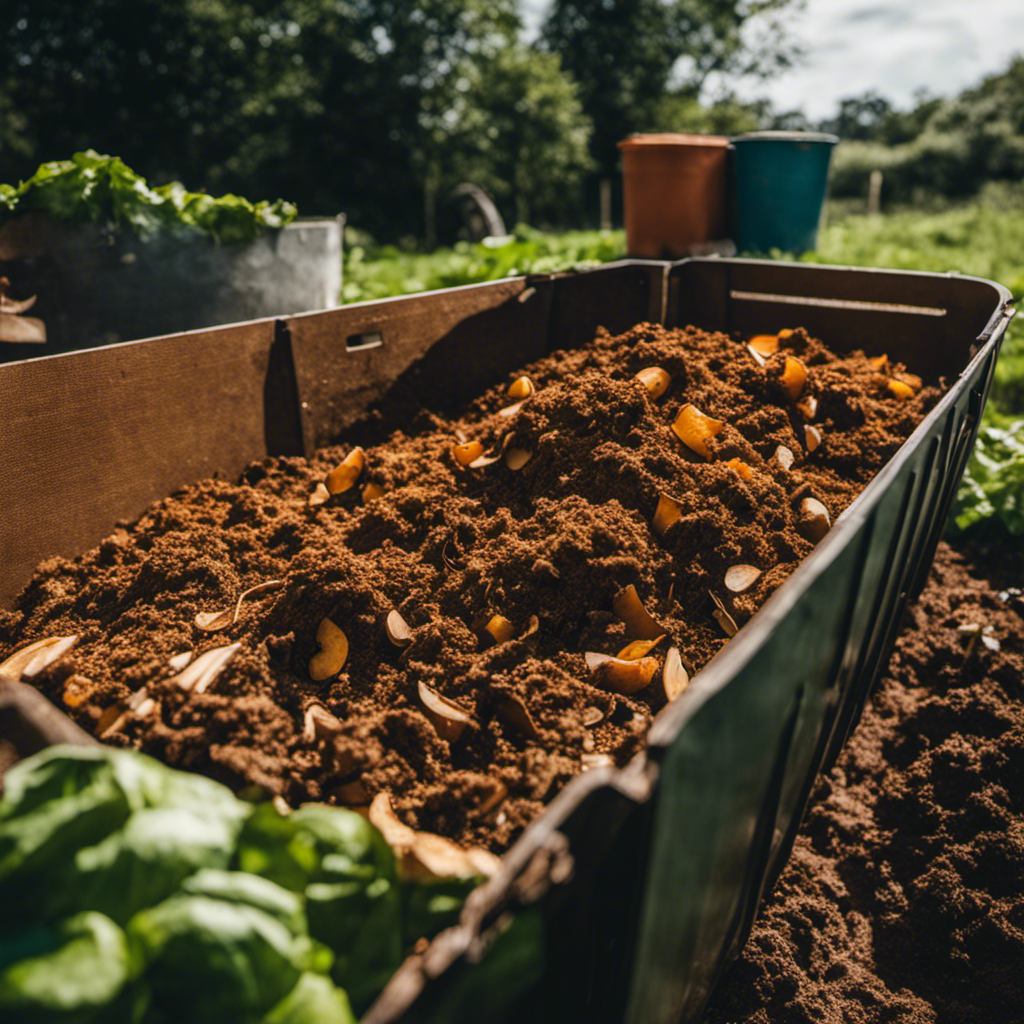
Exploring Advanced Composting Techniques: Bokashi Composting
During my research on composting methods for organic farms, I came across an intriguing technique known as Bokashi Composting. Bokashi, a Japanese term meaning ‘fermented organic matter,’ offers numerous benefits for organic farmers.
Benefits of Bokashi Composting:
-
Speed: Bokashi composting is a rapid process that allows farmers to produce nutrient-rich compost in a short period. This is particularly advantageous for farmers who require quick compost for their crops.
-
Odor Control: Unlike traditional composting methods, Bokashi composting utilizes a special mix of microorganisms that ferment the organic matter. This fermentation process effectively controls unpleasant odors that can be a concern for farmers and their communities.
-
Versatility: Bokashi composting can be done indoors, making it a suitable option for farmers with limited outdoor space or those residing in urban areas. This versatility enables farmers to compost throughout the year, regardless of weather conditions.
To practice Bokashi composting, organic farmers typically follow these techniques:
-
Begin by collecting organic waste such as fruit and vegetable scraps, coffee grounds, and eggshells.
-
Place the waste in an airtight container and sprinkle it with a mixture of Bokashi bran that contains effective microorganisms.
-
Repeat this layering process until the container is full, ensuring to press down the waste to remove any air pockets.
-
Seal the container tightly and allow it to ferment for approximately two weeks. During this time, the microorganisms will break down the organic matter.
-
Once the fermentation process is complete, bury the fermented waste in the soil or add it to an existing compost pile. This allows the waste to continue decomposing and enriching the soil with nutrients.
Bokashi composting is an excellent option for organic farmers seeking to expedite the composting process, control odors, and optimize their space utilization. By incorporating Bokashi composting techniques into their farming practices, farmers can create high-quality compost to nourish their crops and promote sustainable agriculture.
Aerated Static Pile Composting
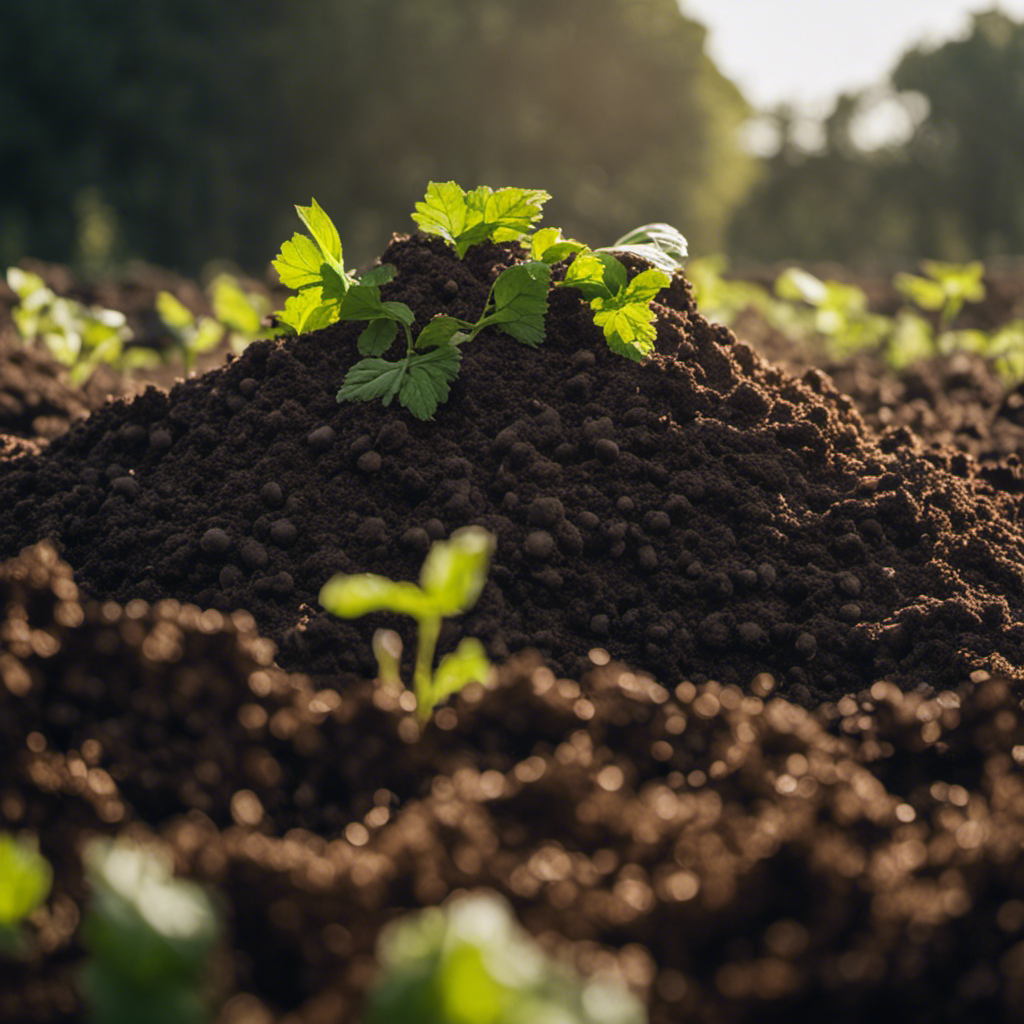
Aerated Static Pile Composting
One effective technique for advanced composting on organic farms is aerated static pile composting. This method involves creating a large pile of organic materials and providing a controlled environment for decomposition to occur. The key to successful aerated static pile composting lies in proper troubleshooting and understanding the benefits it offers.
When troubleshooting aerated static pile composting, one common issue is inadequate aeration. This can lead to anaerobic conditions, resulting in unpleasant odors and slow composting. To address this, it’s important to ensure proper airflow through the pile by using a perforated pipe or a network of pipes placed strategically within the pile. Regular monitoring of oxygen levels and adjusting the aeration system accordingly can help maintain aerobic conditions.
On the other hand, the benefits of aerated static pile composting are numerous. It allows for faster composting compared to traditional methods. The controlled environment, combined with proper aeration, promotes the activity of beneficial microorganisms, accelerating the decomposition process. Additionally, this technique reduces the risk of pathogens and weed seeds surviving in the compost, resulting in a higher quality end product.
Windrow Composting
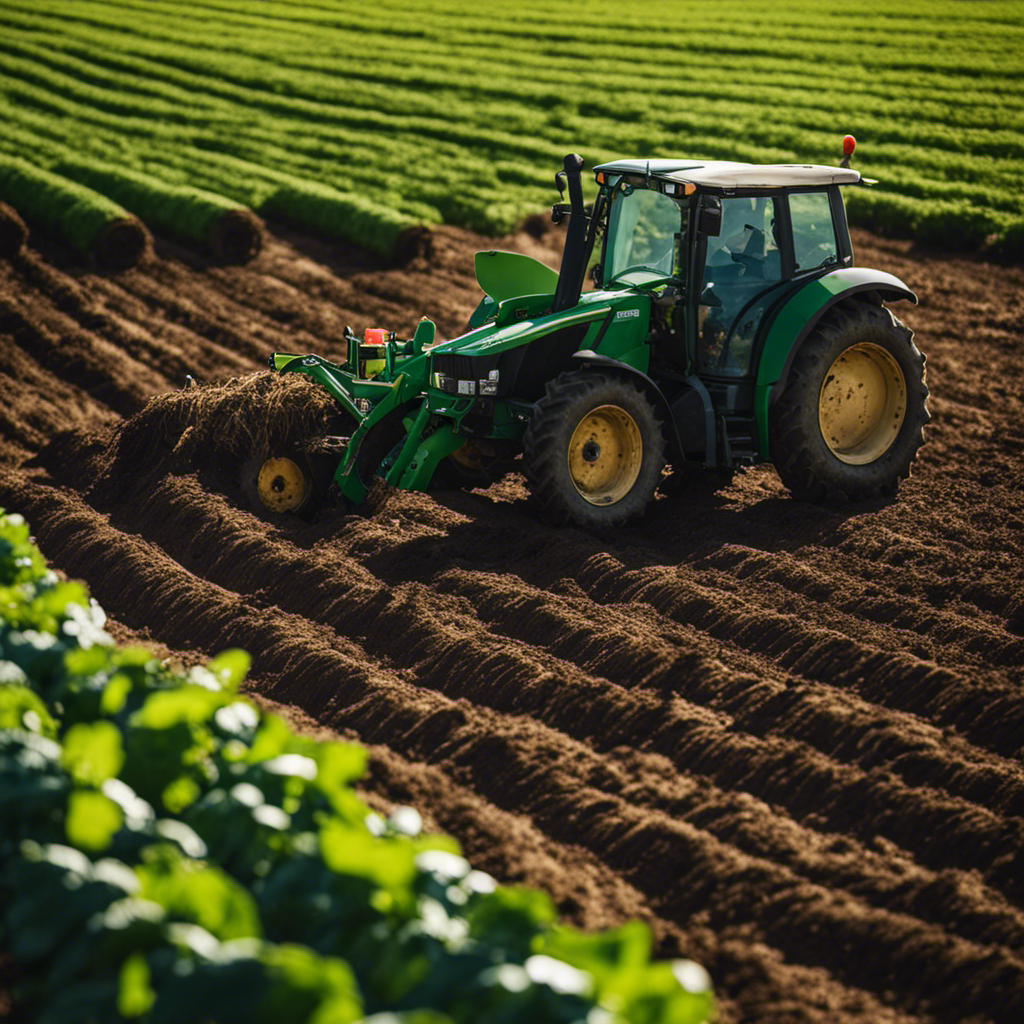
When it comes to windrow composting, there are several benefits to consider.
Windrows provide better aeration and temperature control, which helps break down organic material more effectively.
Additionally, implementing proper turning techniques is crucial for maintaining optimal conditions and ensuring efficient composting.
Lastly, troubleshooting common issues, such as odor problems or uneven decomposition, is important for the success of windrow composting on organic farms.
Benefits of Windrows
One significant advantage of windrows, also known as windrow composting, is that it enables efficient decomposition of organic materials on organic farms.
Windrow composting involves creating long, narrow piles of organic waste materials that are regularly turned to enhance decomposition.
The benefits of windrows are as follows:
-
Improved airflow: The long, narrow shape of windrows promotes better circulation of air throughout the compost pile. This ensures that the microorganisms responsible for decomposition receive the necessary oxygen to thrive.
-
Temperature regulation: Windrows can be easily monitored and adjusted for temperature, allowing farmers to create optimal conditions for microbial activity. This helps speed up the decomposition process and ensures the production of high-quality compost.
-
Weed and pathogen control: Regular turning of windrows disrupts the growth of weed seeds and helps eliminate harmful pathogens, reducing the risk of contamination in the final compost product.
Proper Turning Techniques
Proper Techniques for Turning Windrow Composting
To achieve optimal decomposition in windrow composting, farmers must employ specific techniques for turning the piles. These techniques are crucial to maintaining a balanced composting process and ensuring the rapid breakdown of organic materials.
The first step in proper turning is having the right composting equipment. Farmers can use a front-end loader or a compost turner to effectively turn the windrows. These machines help mix the composting materials, increase aeration, and promote microbial activity.
Monitoring and controlling the composting temperature during the turning process is also important. Turning the windrows every three to five days helps maintain an ideal temperature range of 130-150°F (54-65°C). This temperature range promotes the growth of thermophilic microorganisms, which accelerate the decomposition process.
Troubleshooting Common Issues
Addressing Common Issues in Windrow Composting
In continuation of our discussion on proper turning techniques, it’s crucial to acknowledge the common issues that can arise during windrow composting. Maintaining the right temperature and moisture levels is essential for successful decomposition. Here are some common issues you may encounter and tips to troubleshoot them:
-
Inadequate compost pile temperature:
-
Promote heat generation by properly mixing and layering materials.
-
Regularly monitor the temperature using a compost thermometer.
-
Adjust the carbon-to-nitrogen ratio if the temperature drops below the desired range.
-
Excessive moisture levels:
-
Avoid over-watering the compost pile.
-
Increase aeration by turning the windrow more frequently.
-
Add dry, high-carbon materials like straw or wood chips to absorb excess moisture.
-
Insufficient moisture levels:
-
Water the windrow if it becomes dry, aiming for a moisture content of 50-60%.
-
Cover the windrow to prevent excessive evaporation.
By addressing these common issues and following the troubleshooting tips provided, you can maintain optimal compost pile temperature and moisture levels, ensuring efficient decomposition of organic materials on your organic farm.
In-Vessel Composting
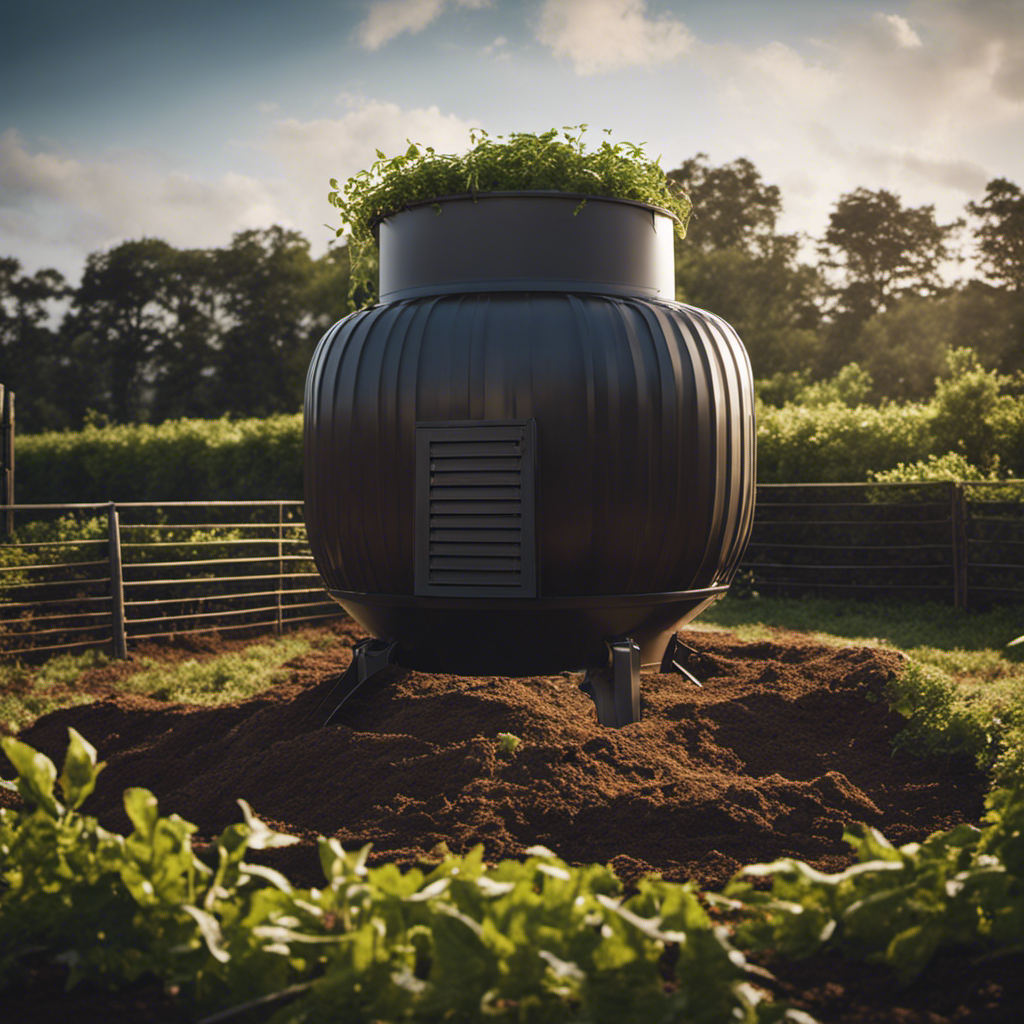
In-vessel composting offers numerous benefits for organic farms. It allows for better control of the composting process, helping to reduce odors and minimize the risk of pests. To achieve optimal results, it’s important to follow proper maintenance techniques, such as regularly turning the compost and monitoring temperature and moisture levels.
When considering an in-vessel composting system, it’s crucial to choose the right system that aligns with the specific needs and scale of the farm.
Benefits of In-Vessel
The efficiency of in-vessel composting is improved by its ability to speed up decomposition, resulting in faster production of nutrient-rich compost on organic farms. This technique involves placing the organic materials into a closed container, such as a drum or a bin, which allows for better control of the composting process.
Here are the benefits of in-vessel composting:
-
Reduced odor: The closed system helps contain and manage odors, making it a more pleasant experience for farmers and nearby residents.
-
Improved temperature control: In-vessel composting allows for better control of temperature, ensuring that the compost reaches optimal levels for decomposition.
-
Enhanced pest control: The closed system prevents pests, such as rodents and insects, from accessing the compost, reducing the risk of infestations.
Proper Maintenance Techniques
Maintaining the efficiency and effectiveness of in-vessel composting requires regular monitoring and adjustment of temperature, moisture levels, and oxygen levels within the closed container. Proper maintenance techniques are crucial to ensure optimal decomposition of organic matter and the production of high-quality compost.
Monitoring the temperature is essential as it affects the microbial activity responsible for breaking down the organic material. By regularly checking the temperature with a thermometer and adjusting it through airflow or turning the compost pile, I can promote the desired microbial activity.
Maintaining moisture levels between 40 to 60% is also important for successful composting. Using a moisture meter, I can check the moisture content and make necessary adjustments. If the moisture is too high, I add dry materials to absorb excess moisture. On the other hand, if it’s too low, I spray water to increase the moisture content. This careful monitoring ensures the ideal conditions for decomposition.
Proper aeration is vital for aerobic decomposition, and I achieve this by turning the compost pile using a specialized tool. This promotes oxygen flow and supports the decomposition process. It’s important to troubleshoot common issues such as odor, pests, or slow decomposition promptly. Proactive monitoring and quick action can help address these challenges effectively.
Choosing the Right System
When it came to finding the right composting system for my organic farm, I wanted to explore different options. After careful consideration, I came across the in-vessel composting system, which seemed to be the perfect fit for my needs. This system offers several advantages over traditional composting methods.
One of the benefits of in-vessel composting is increased control. With this system, I can precisely manage the compost pile by adjusting the temperature, moisture, and aeration levels. This allows me to create the optimal environment for decomposition.
Another advantage is faster decomposition. The enclosed nature of the in-vessel system accelerates the composting process by maintaining a consistent temperature and preventing the escape of heat. As a result, the decomposition happens more quickly, leading to a shorter turnaround time for finished compost.
Odor and pest control is also addressed with the in-vessel system. The closed design helps to control odors and deter pests, ensuring a clean and hygienic composting process.
In addition to selecting the right composting system, I also considered the choice of composting materials. By carefully choosing a balanced mix of organic waste materials, such as kitchen scraps, yard trimmings, and manure, I can create nutrient-rich compost that will greatly benefit my crops and soil health.
Compost Tea Brewing
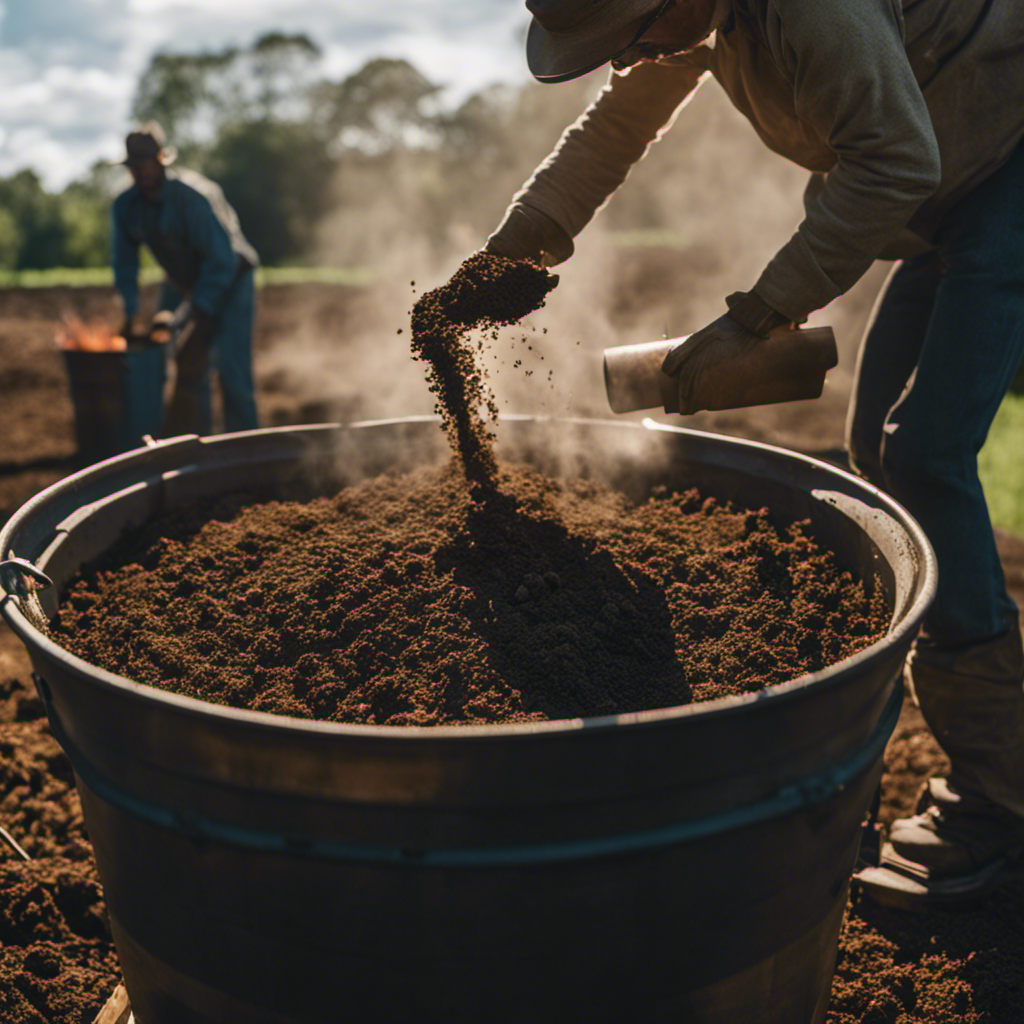
As an organic farmer, I’ve found that incorporating compost tea brewing into my farming practices has greatly improved soil fertility and plant health. Compost tea, also known as liquid gold, is a powerful organic fertilizer and soil amendment that offers numerous benefits to crops.
The process of brewing compost tea begins by selecting high-quality compost and steeping it in water for a specific period of time. This allows the beneficial microorganisms, nutrients, and enzymes present in the compost to be extracted into the water. The resulting liquid is then aerated to provide oxygen to the microorganisms, which helps them multiply rapidly.
One of the key advantages of compost tea is its ability to enhance soil fertility. The microorganisms in the tea break down organic matter, releasing essential nutrients that are easily absorbed by plants. This promotes nutrient cycling and supports healthy root development, resulting in stronger and more productive plants.
Compost tea also acts as a natural pest and disease control method. The beneficial microorganisms in the tea outcompete harmful pathogens, reducing the occurrence of plant diseases. Additionally, the tea contains compounds that repel or inhibit the growth of pests, reducing the need for chemical pesticides.
Incorporating compost tea brewing into my farming practices hasn’t only improved the overall health of my plants but also reduced the reliance on synthetic fertilizers and pesticides. It’s an environmentally friendly and sustainable way to nourish the soil and promote the growth of healthy crops.
Biochar Composting
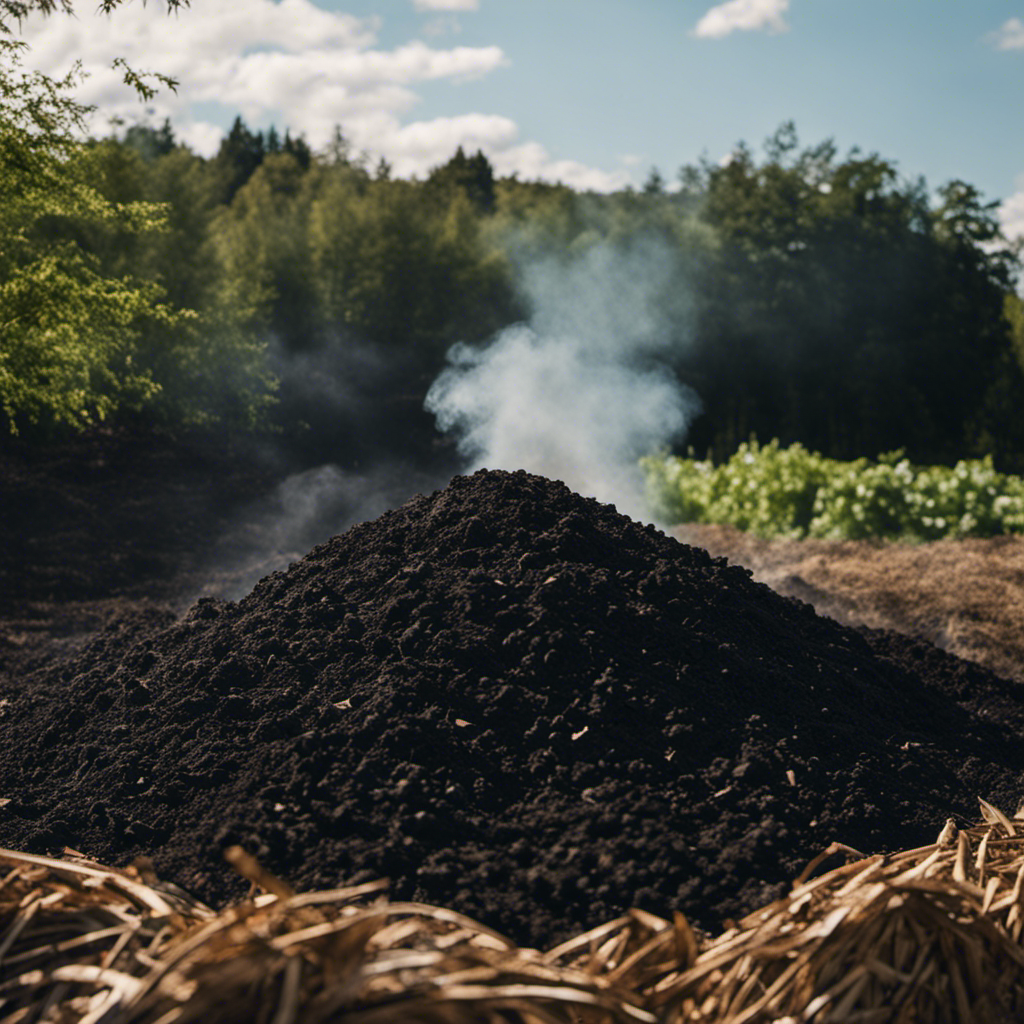
When it comes to biochar composting, understanding its numerous benefits is crucial.
Biochar, a stable form of carbon, can greatly enhance soil fertility and nutrient retention. Additionally, it promotes the filtration of water and air.
There are different methods for applying biochar in composting. It can be directly incorporated into the compost pile or mixed with organic materials to ensure even distribution.
The process of biochar composting involves the decomposition of organic matter along with the biochar. This results in a nutrient-rich and stable compost that has the potential to significantly improve soil health and promote better plant growth.
Benefits of Biochar
Using biochar in composting offers numerous benefits for organic farms. Biochar, a carbon-rich material produced through various methods, can enhance the soil’s fertility and nutrient retention capabilities. This, in turn, leads to healthier plants and increased crop yields.
The advantages of incorporating biochar in composting are as follows:
-
Improved water holding capacity: Biochar acts like a sponge, absorbing and retaining moisture in the soil. As a result, it reduces water runoff, decreases the need for irrigation, and conserves water resources.
-
Increased nutrient availability: Biochar provides a stable habitat for beneficial microorganisms, allowing them to thrive. These microorganisms break down organic matter in the compost, releasing nutrients that are readily available for plant uptake.
-
Enhanced carbon sequestration: By using biochar in composting, organic farms contribute to the reduction of greenhouse gas emissions. Biochar has the potential to sequester carbon for an extended period, thus helping mitigate climate change.
Biochar Application Methods
Practical Application of Biochar in Composting Methods on Organic Farms
Now let’s explore the practical ways to use biochar in composting on organic farms. Biochar is a valuable soil amendment that can greatly improve composting processes and enhance overall soil health. To effectively incorporate biochar into composting, it’s important to consider the methods used for producing biochar and the desired outcome of using it as a soil amendment.
Biochar can be produced using different methods like pyrolysis, gasification, and slow pyrolysis. Each method has its own advantages and disadvantages, but the end result is a stable carbon-rich material that can retain nutrients and water in the soil.
When applying biochar to compost, it’s recommended to thoroughly mix it with the organic waste materials. This ensures that the biochar is evenly distributed throughout the compost pile, allowing for better absorption of nutrients and retention of moisture. Additionally, incorporating biochar into compost helps reduce greenhouse gas emissions during the decomposition process.
Biochar Composting Process
In my experience with organic farming, I’ve discovered that incorporating biochar into the composting process can effectively improve soil health and enhance nutrient cycling. Biochar is a type of charcoal that’s produced by burning organic materials at high temperatures in a low-oxygen environment. When added to the compost pile, biochar provides several benefits for the soil.
One of the key advantages is enhanced carbon sequestration. Biochar contains a significant amount of carbon, which helps capture and store carbon from the atmosphere. This process reduces greenhouse gas emissions and contributes to mitigating climate change.
Moreover, biochar improves soil fertility by acting as a sponge. It retains nutrients and moisture in the soil, making them more readily available to plants. Additionally, biochar creates a favorable environment for beneficial microorganisms, which further enhances soil health.
Another benefit is increased water retention. Biochar has a porous structure that aids in retaining water in the soil. This reduces the need for irrigation, conserving precious water resources.
Composting With Black Soldier Flies
Composting With Black Soldier Flies
One effective technique for advanced composting on organic farms involves using the natural abilities of black soldier flies. These flies, scientifically known as Hermetia illucens, have become popular in recent years because they can efficiently convert organic waste into valuable compost. Black soldier fly larvae farming is key to this process.
Black soldier fly larvae are great eaters and can consume a variety of organic materials, including kitchen scraps, crop residues, and manure. By introducing these larvae into compost piles, they speed up the decomposition process by breaking down the organic matter and converting it into nutrient-rich compost.
In addition to their role in composting, black soldier fly larvae also have significant potential in animal feed production. They’re highly nutritious and can be used as a sustainable protein source for livestock and aquaculture. Their high protein content and balanced amino acid profile make them an ideal substitute for conventional feed ingredients like soybean meal or fishmeal.
To incorporate black soldier fly larvae into composting systems, organic farmers can establish dedicated larvae farms or purchase larvae from commercial suppliers. The larvae are then introduced into composting bins or piles, where they feed and break down the organic waste. The resulting compost can be used as a valuable soil amendment, providing essential nutrients and improving soil structure.
In summary, black soldier flies and their larvae offer a sustainable and efficient solution for advanced composting on organic farms. By harnessing their natural abilities, farmers can’t only produce high-quality compost but also contribute to the development of sustainable animal feed alternatives.
[Custom Quote]: ‘Black soldier flies are nature’s composting champions, turning waste into valuable resources for organic farming.’
Composting With Earthworms
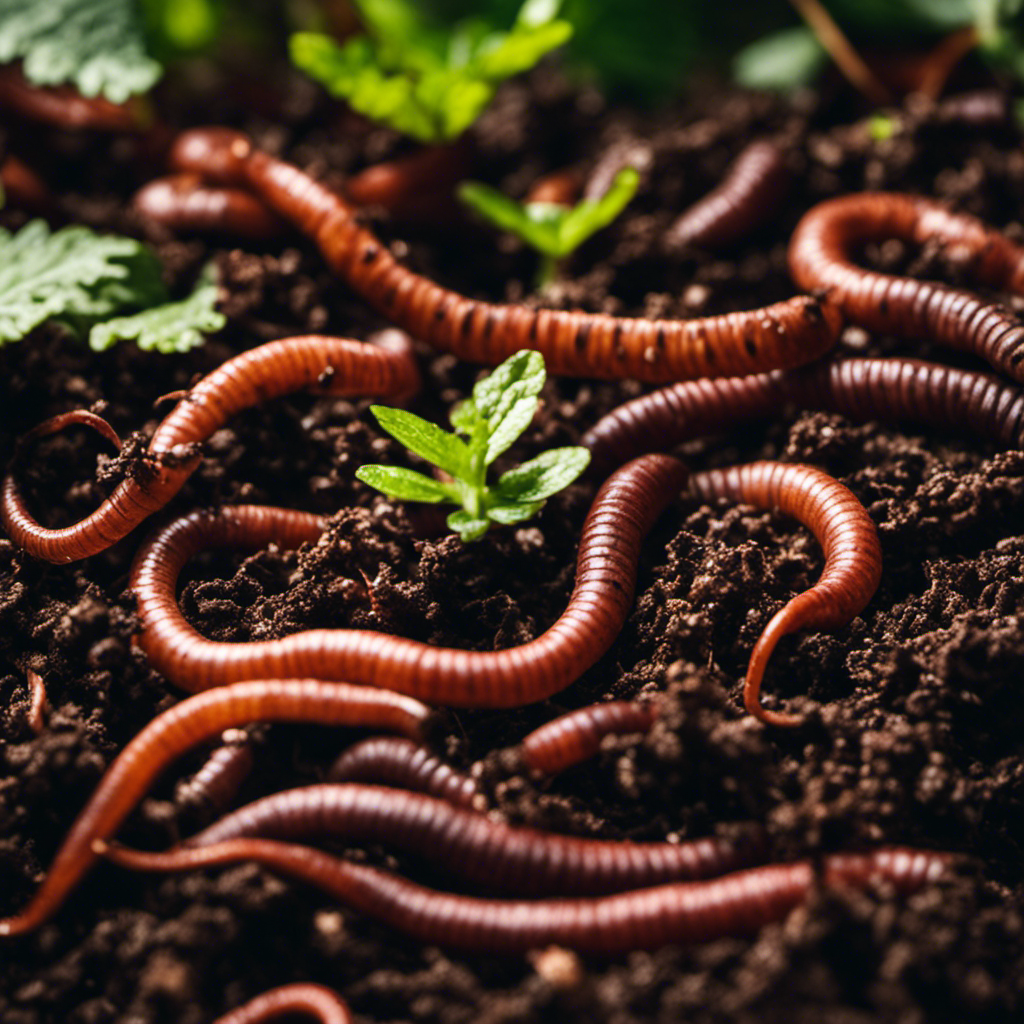
The role of earthworms in composting on organic farms is essential for improving decomposition and nutrient cycling. Earthworms are efficient decomposers and their presence in the compost pile can greatly accelerate the breakdown process. Here are some key reasons why earthworms are valuable contributors to composting:
-
Increased aeration: Earthworms create tunnels and burrows as they move through the compost pile, which improves the porosity and aeration. This allows for better oxygen flow, promoting the growth of aerobic microorganisms that break down organic matter.
-
Enhanced nutrient availability: Earthworms consume organic material and produce nutrient-rich waste called worm castings. These castings contain beneficial microorganisms and essential nutrients that are readily available for plant uptake. Adding worm castings to the compost enriches it with valuable nutrients.
-
Production of vermicompost tea: Earthworms can also produce vermicompost tea, a nutrient-rich liquid fertilizer. This tea is made by steeping worm castings in water, allowing beneficial microorganisms and nutrients to leach out. Vermicompost tea can be applied directly to plants or used as a foliar spray, providing a boost of nutrients and promoting plant growth.
Conclusion
These advanced composting techniques provide organic farmers with a variety of options to efficiently manage waste and create nutrient-rich compost.
Methods such as hot composting, vermicomposting, and aerated static pile composting can help reduce environmental impact and maximize the benefits of organic waste.
Incorporating black soldier flies and earthworms further enhances the efficiency of the composting process, promoting a sustainable and thriving farm ecosystem.
So why not explore the world of advanced composting and enjoy the rewards it offers?
